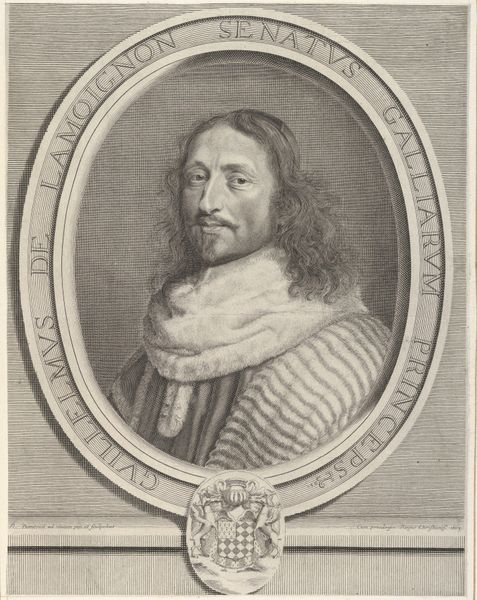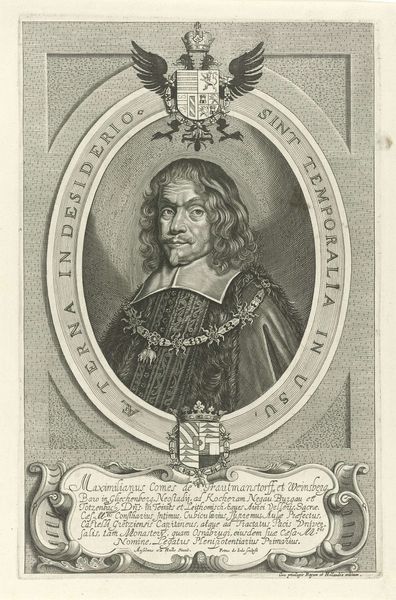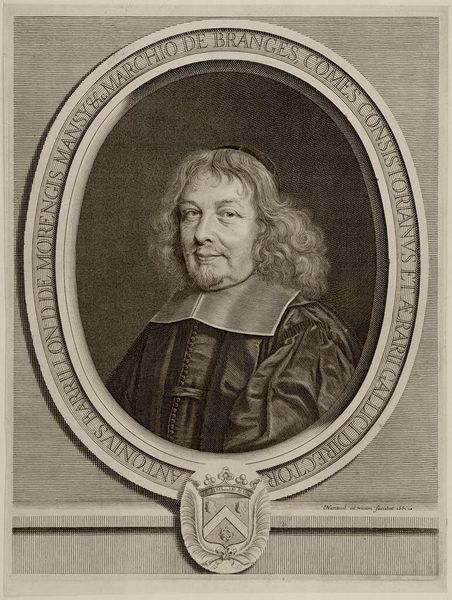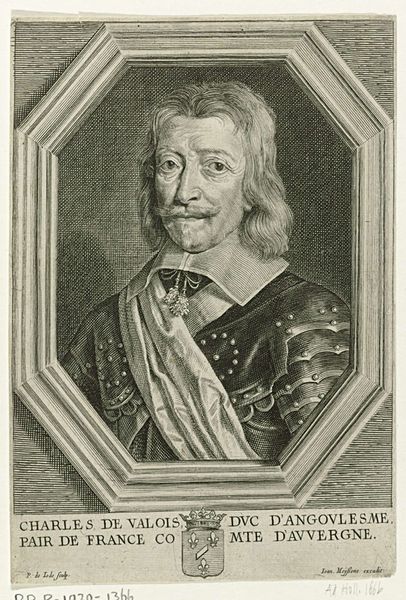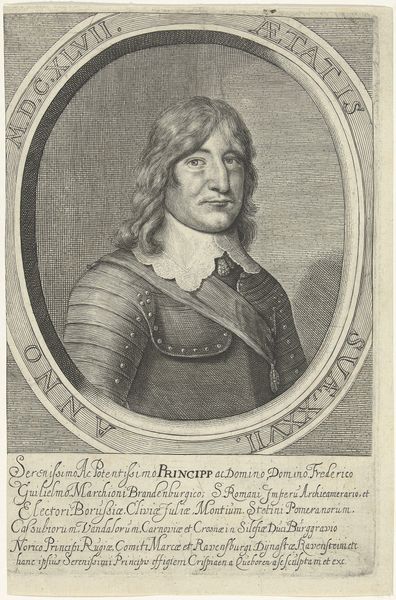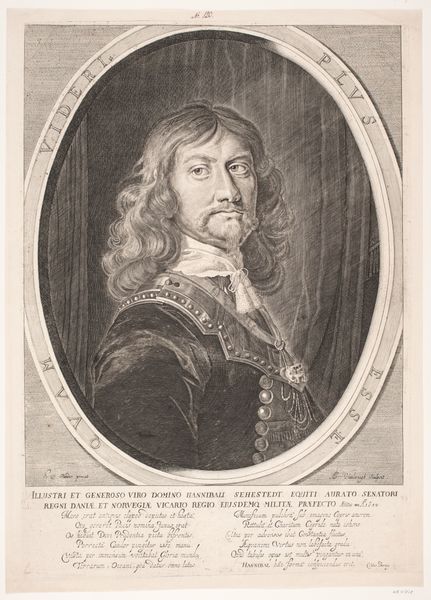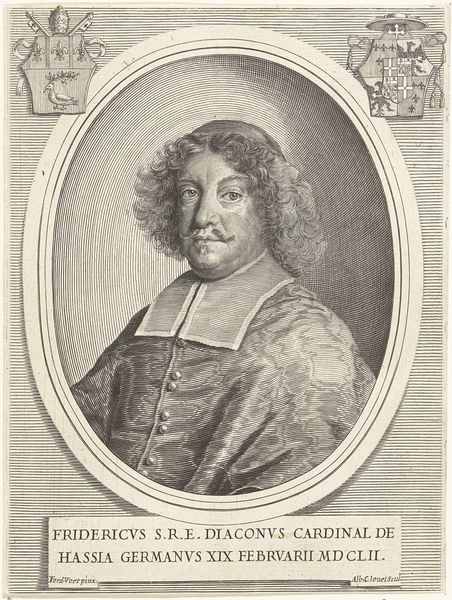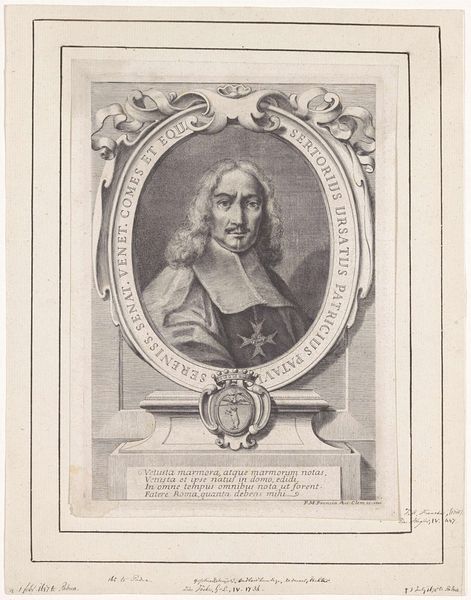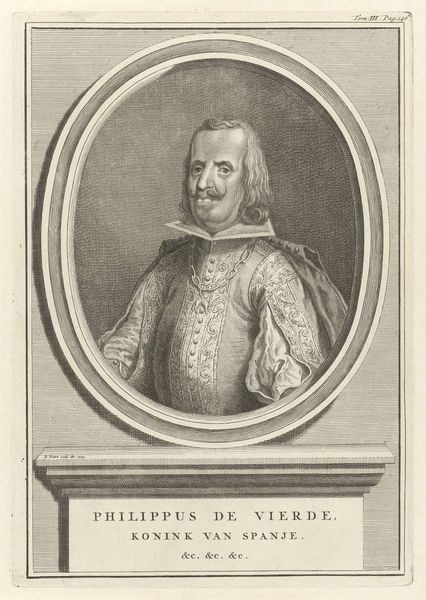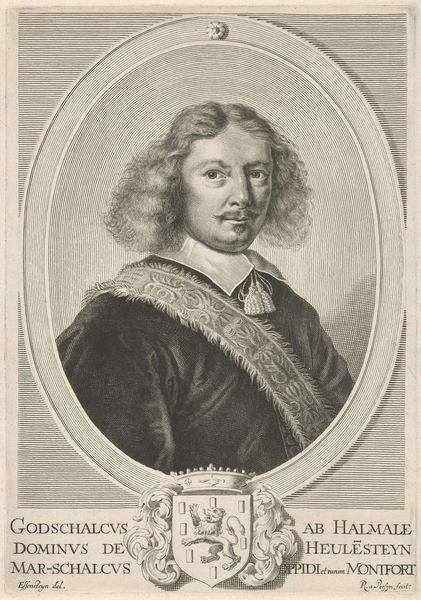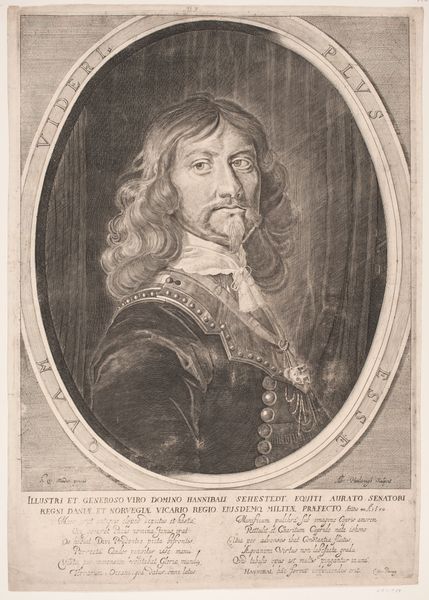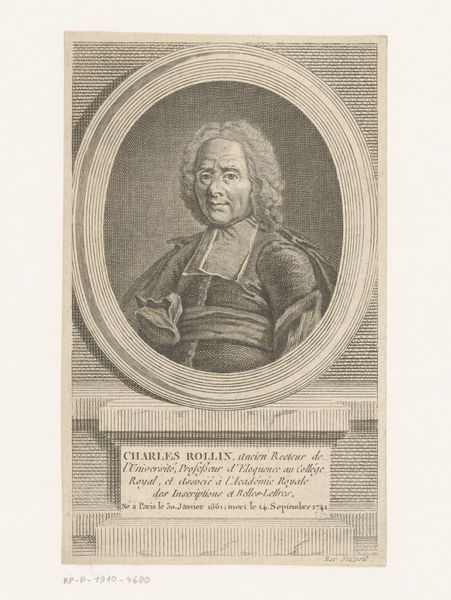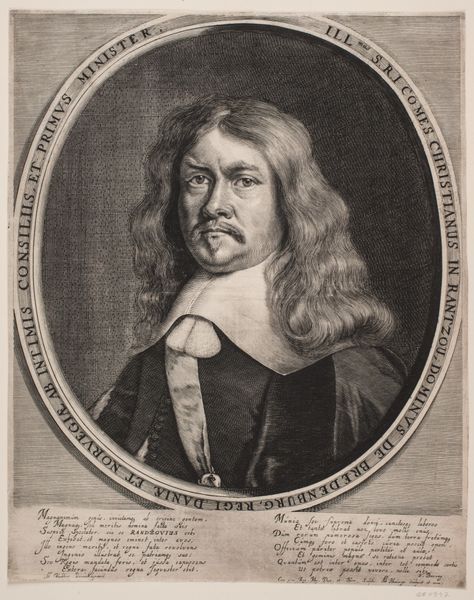
Portret van Jacob, baron van Wassenaer, heer van Obdam 1612 - 1665
0:00
0:00
engraving
#
portrait
#
baroque
#
dutch-golden-age
#
line
#
history-painting
#
engraving
#
historical font
Dimensions: height 258 mm, width 155 mm
Copyright: Rijks Museum: Open Domain
Editor: This is a portrait of Jacob, Baron van Wassenaer, Heer van Obdam, created sometime between 1612 and 1665 by Cornelis van Dalen I. It’s an engraving, and the detail is incredible. The composition is quite formal and of its time. What underlying historical power structures or messages can we discern from this portrait? Curator: This portrait, beyond being a representation of a prominent figure, serves as a potent symbol of Dutch power during the Golden Age. Van Wassenaer was an Admiral, deeply involved in the naval conflicts of the time. Consider the historical context: the Dutch Republic was asserting its dominance in global trade and maritime power. How does this portrait reflect or contribute to the construction of a national identity rooted in naval strength and mercantile success? Editor: So, it’s not just a picture, it’s also a piece of propaganda, in a way? Curator: Precisely. It reinforces a narrative of Dutch exceptionalism. Look at the inscriptions surrounding him, celebrating his lineage and virtues. Think about the act of engraving itself. It was a technology that allowed for widespread dissemination of images, thus propagating particular ideas about Dutch leadership. To whom was this image marketed, and what was it intended to achieve politically and socially? Editor: That makes so much sense! It's easy to see how this image would circulate and reinforce a certain image of Dutch power and legitimacy. Curator: Indeed. And recognizing that propaganda doesn’t simply present facts, it manufactures and idealizes them in alignment with an ideology. We have to always read through that to see who gets excluded. Editor: I hadn't considered the role of printing technology in amplifying the message. It's been enlightening to consider it as a cultural artefact shaping identity and power structures rather than a simple depiction of someone. Curator: And that reframing allows us to ask whose story is not being told. Whose faces aren’t being circulated so widely? Who is outside of the frame?
Comments
No comments
Be the first to comment and join the conversation on the ultimate creative platform.
